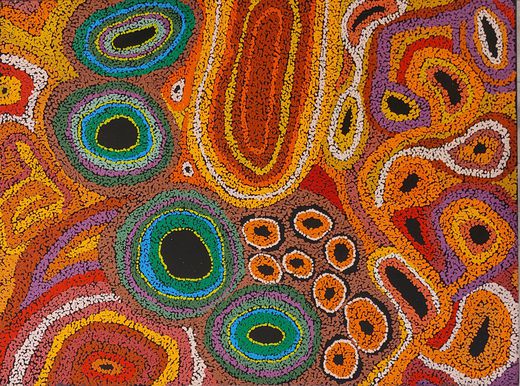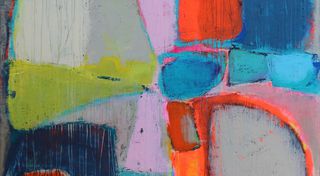

Biography
Rini comes from these isolated lands where, in 1962, we located the last couple to live as a nomad, without contact with the white man (in 1984 we find another isolated family group, of 12 individuals, in the Western Desert, more in the North). The repeated droughts had led most of the Ngaanyatjarra and their neighbors to leave their traditional lands. Some joining the south of Western Australia, another part Haasts Bluff or Kintore in the Western Desert and a large part joining communities in the south of the Central Desert such as Ernabella or Fregon.
Rini Tiger is the daughter of Tiger Palpatja (circa 1920 - 2012), a very important healer and lawyer of Amata. This family lived in the bush before settling in Ernabella and then in Amata. In 1997 the women of Amata created a first art center for women (men were not determined to paint during this period) but it was only in the mid-2000s that artistic activities took off. importance. Rini will stand out with his exuberant style where symmetry is often absent - unlike the canvases of artists from the Northern Territory - and the mixture of colors.
Rini Tiger is therefore originally from the small community of Amata located about 500 km southwest of Alice Springs and which is part of the Angatja region where the Pitjantjatjara Aborigines live.
This territory is a "crossroads" where, during the Time of Creation, several primordial Ancestors met during their mythical journey (Ngiṉṯaka Songline).
Guardian of this thousand-year-old heritage, Rini expresses the Sacred in painting in a style inspired by tradition through its colors and technique and leads us towards a rich, dreamlike and mysterious imagination.
His paintings evoke the desert, the topography, the streams, the clayey lands which retain the rain… when it wants to fall… and all kinds of foods that the Aborigines know how to find. Rini has had some success and has been organizing group exhibitions for several years.
In his paintings, Rini Tiger therefore represents the stories of the Dreamtime and the personalities of the Ancestors who marked out his Country: here, the honey ant. She paints the tunnels (nyinantu) and the nests of honey ants which are built about a meter deep under the Mulgas, trees with deep roots. She also tells how the women scour the bush to find these trees, dig the earth and collect honey.
Nationality
Themes




